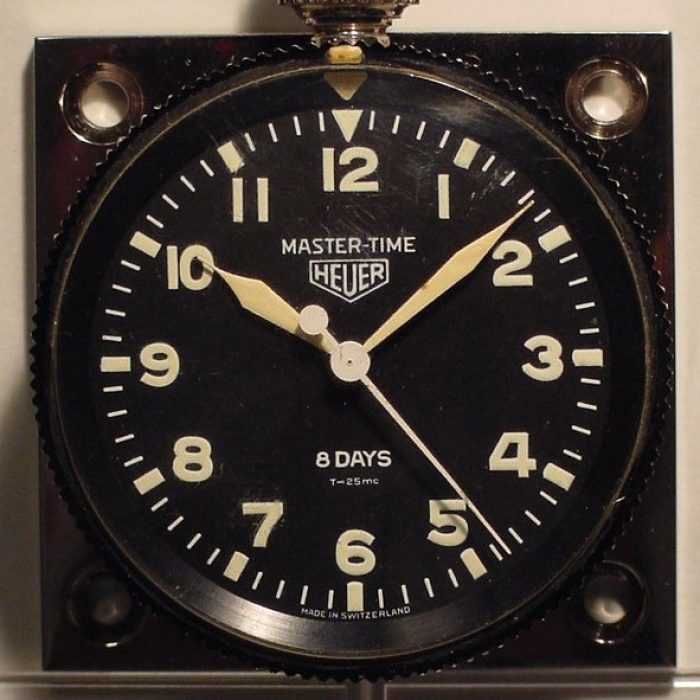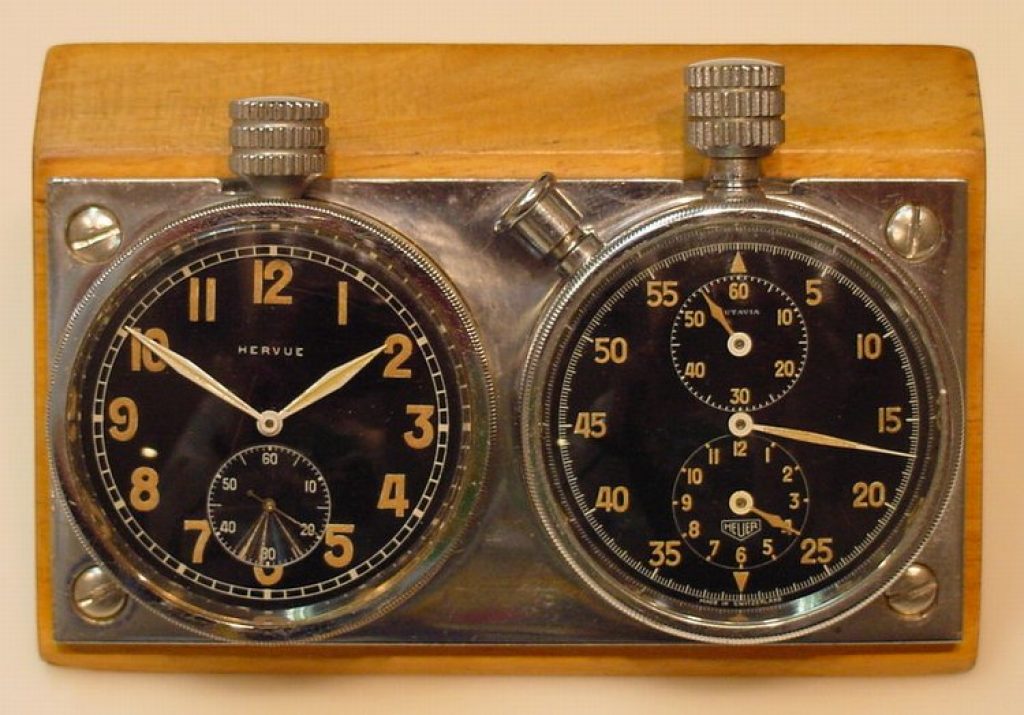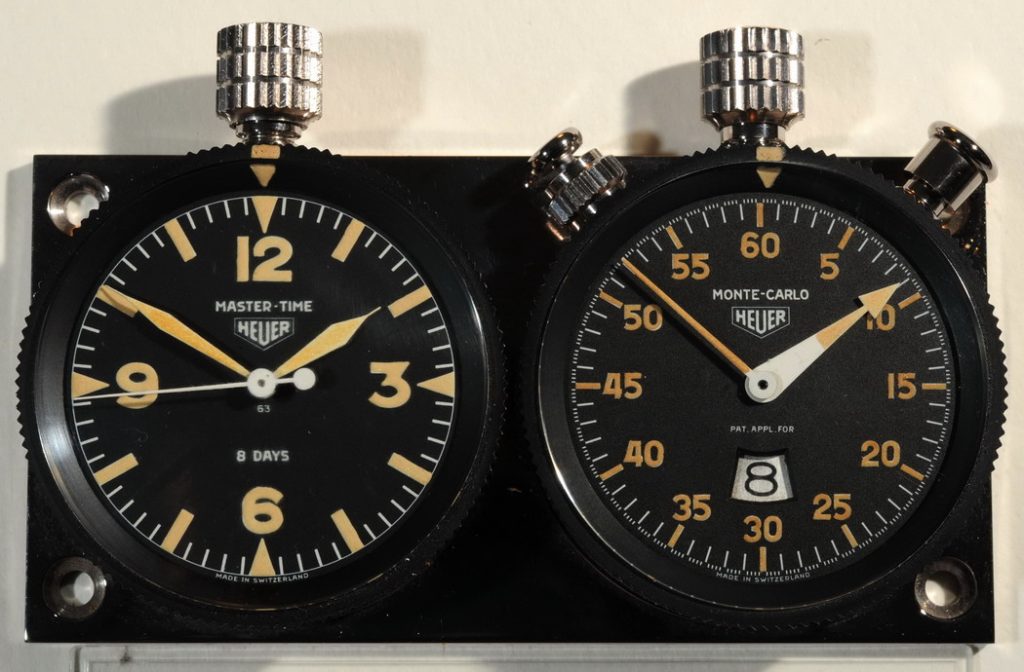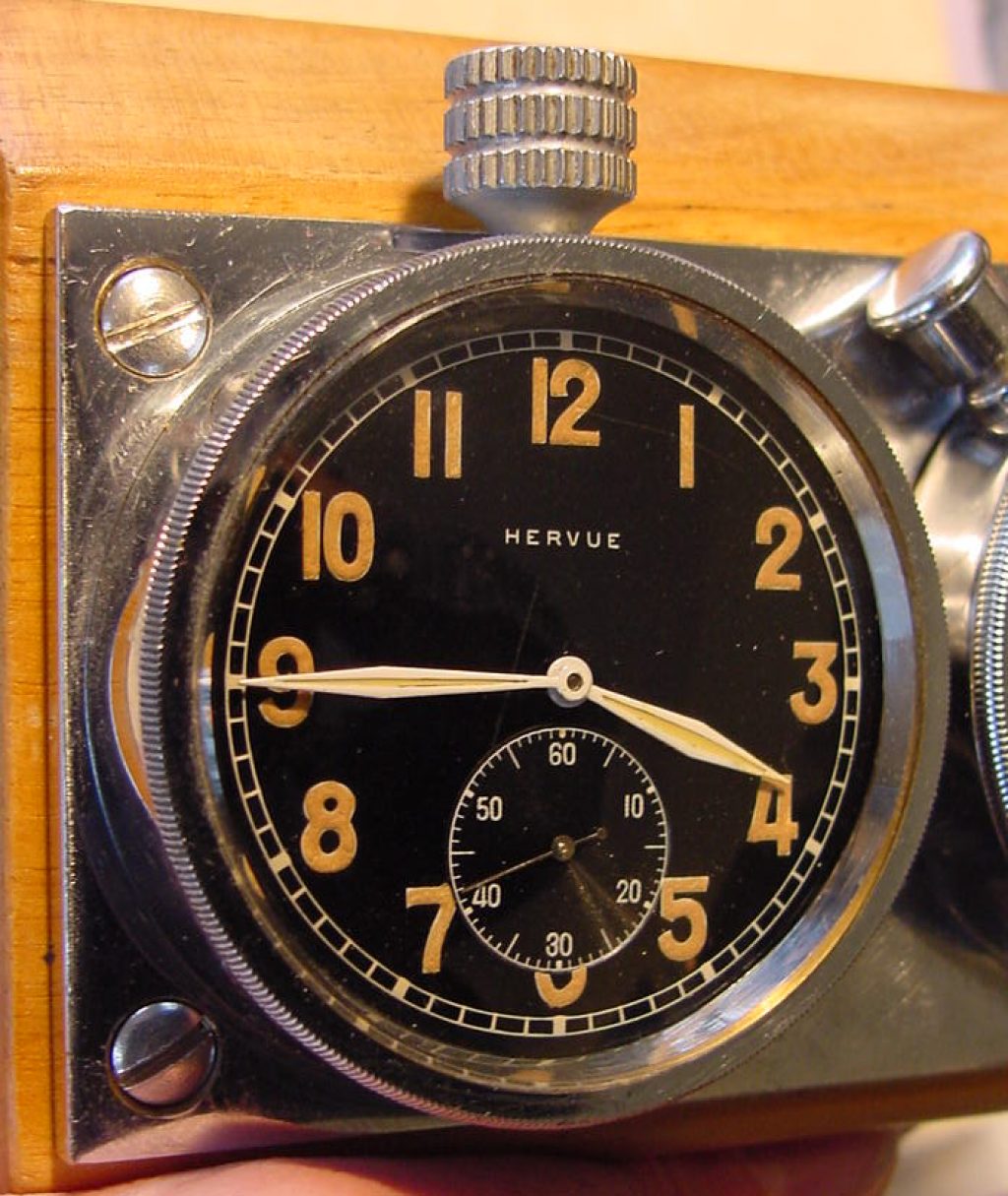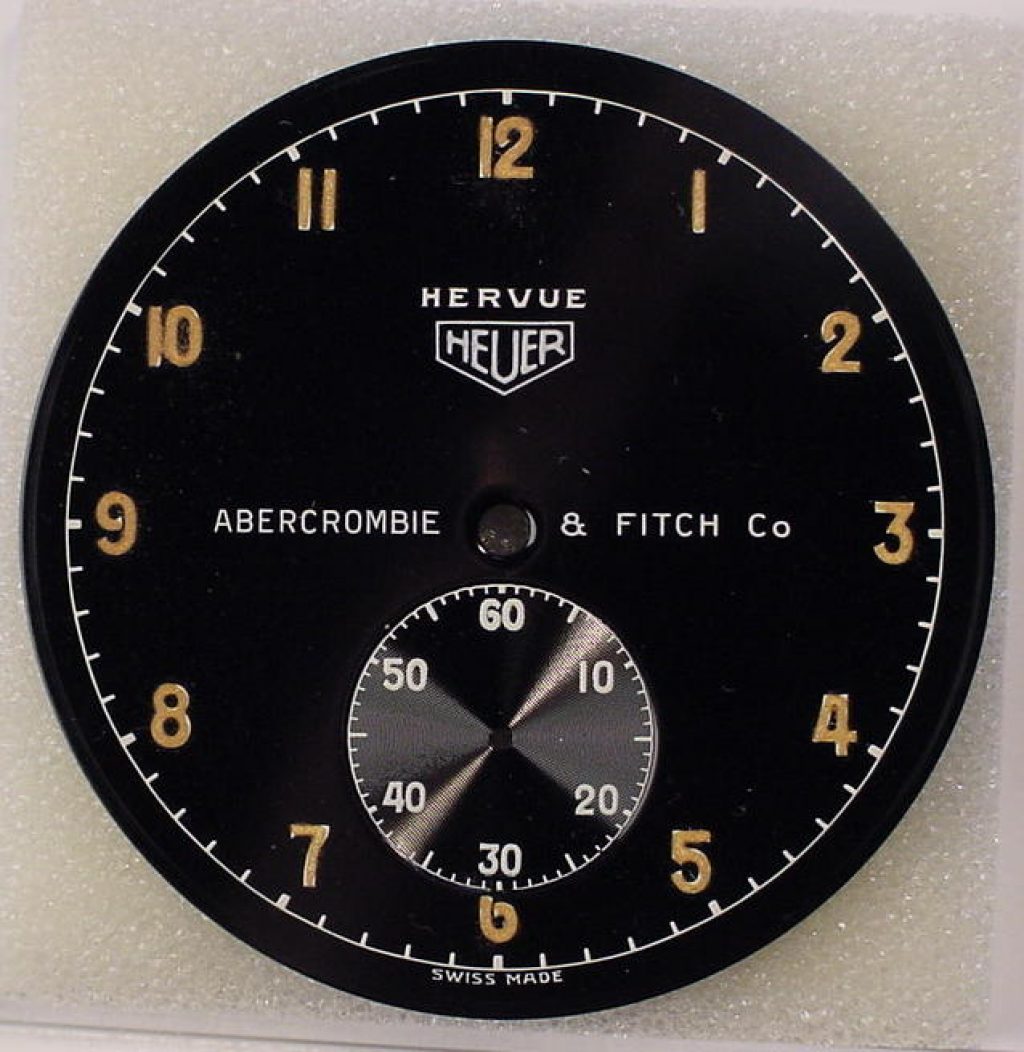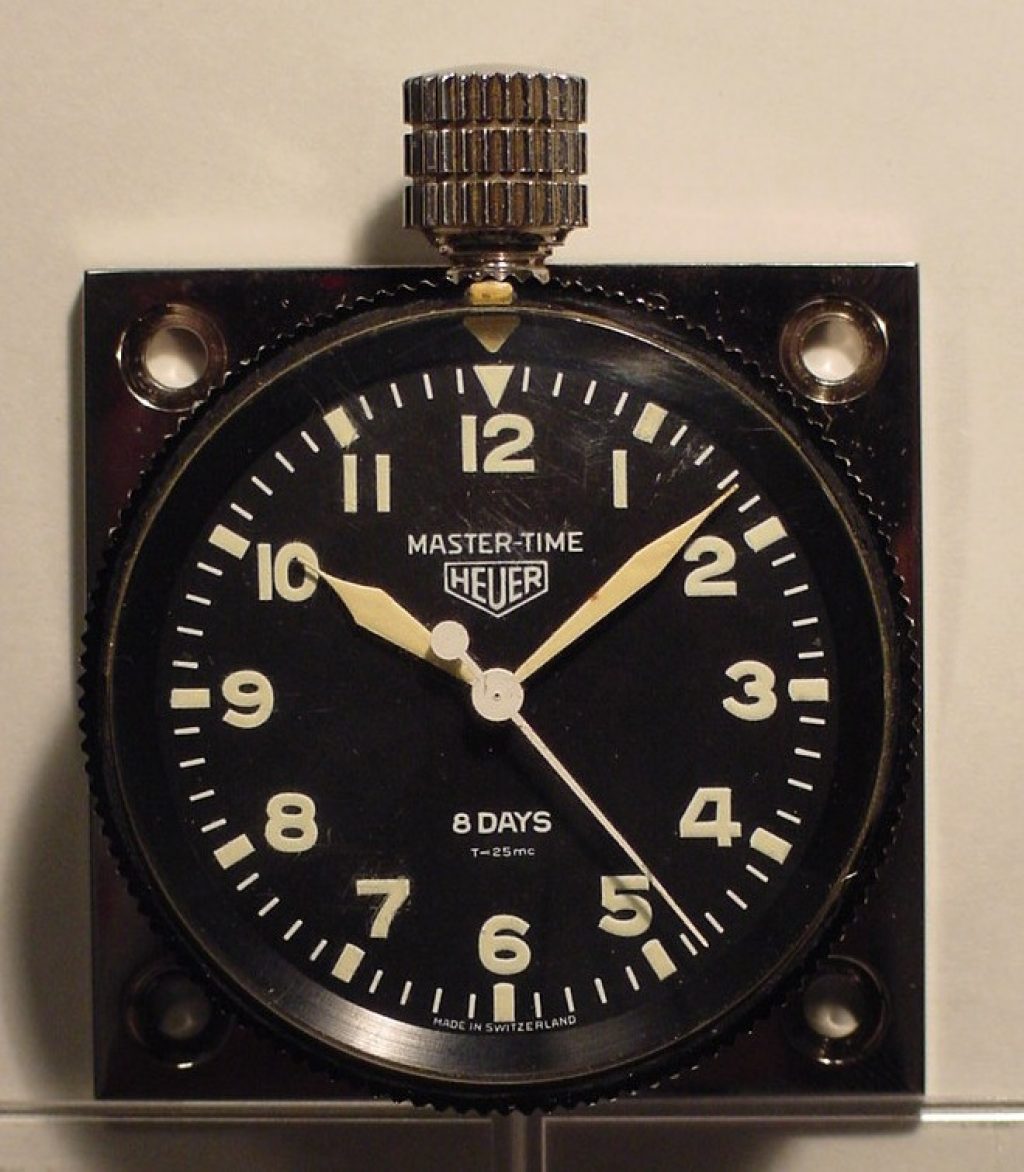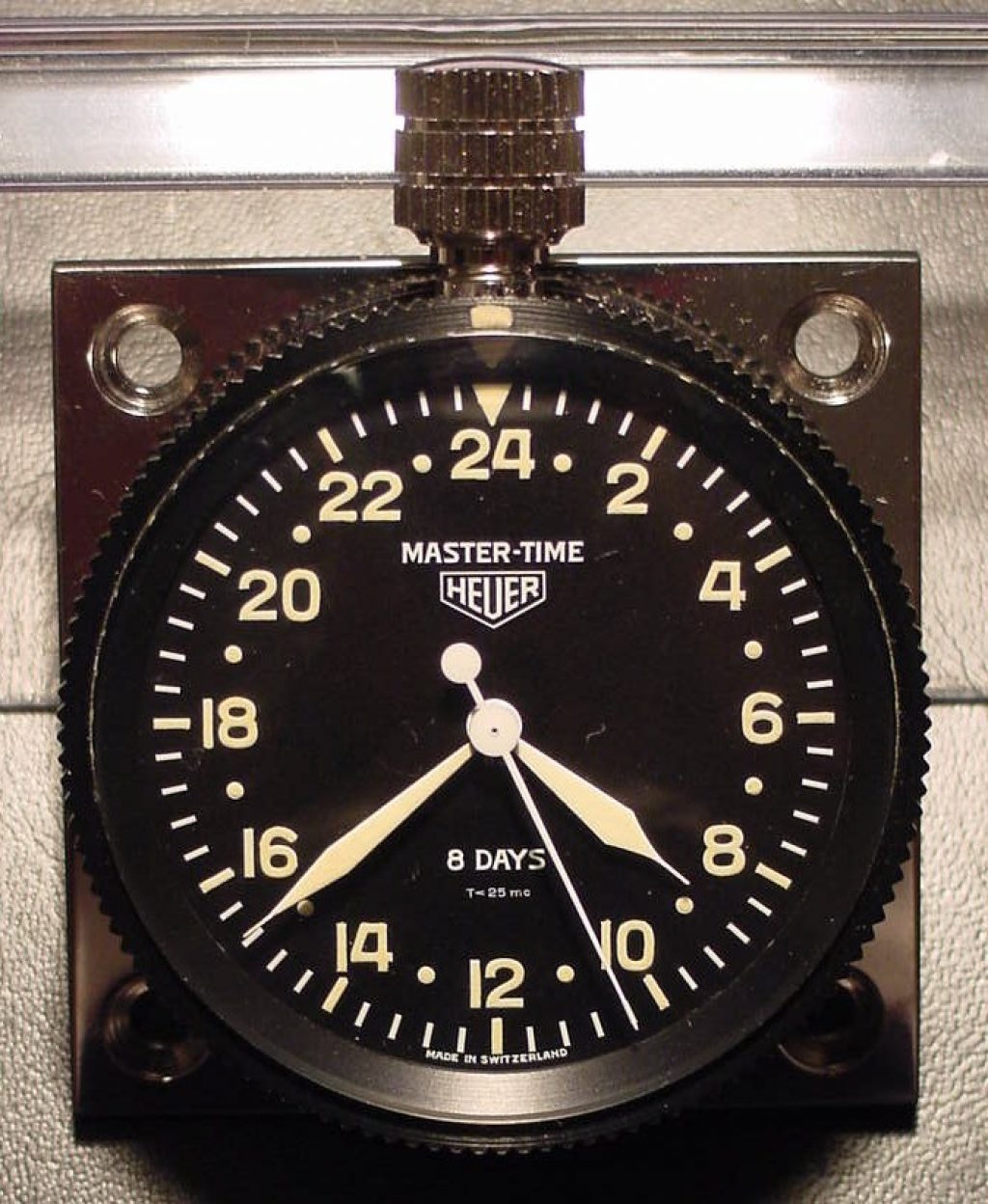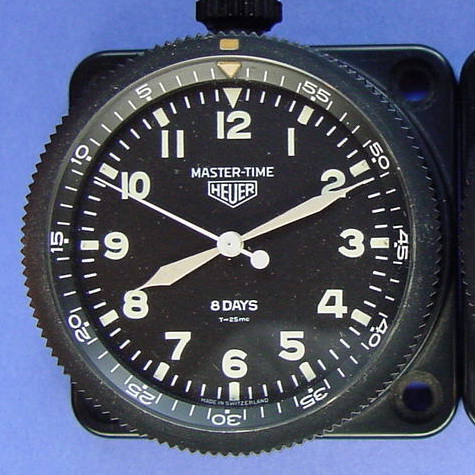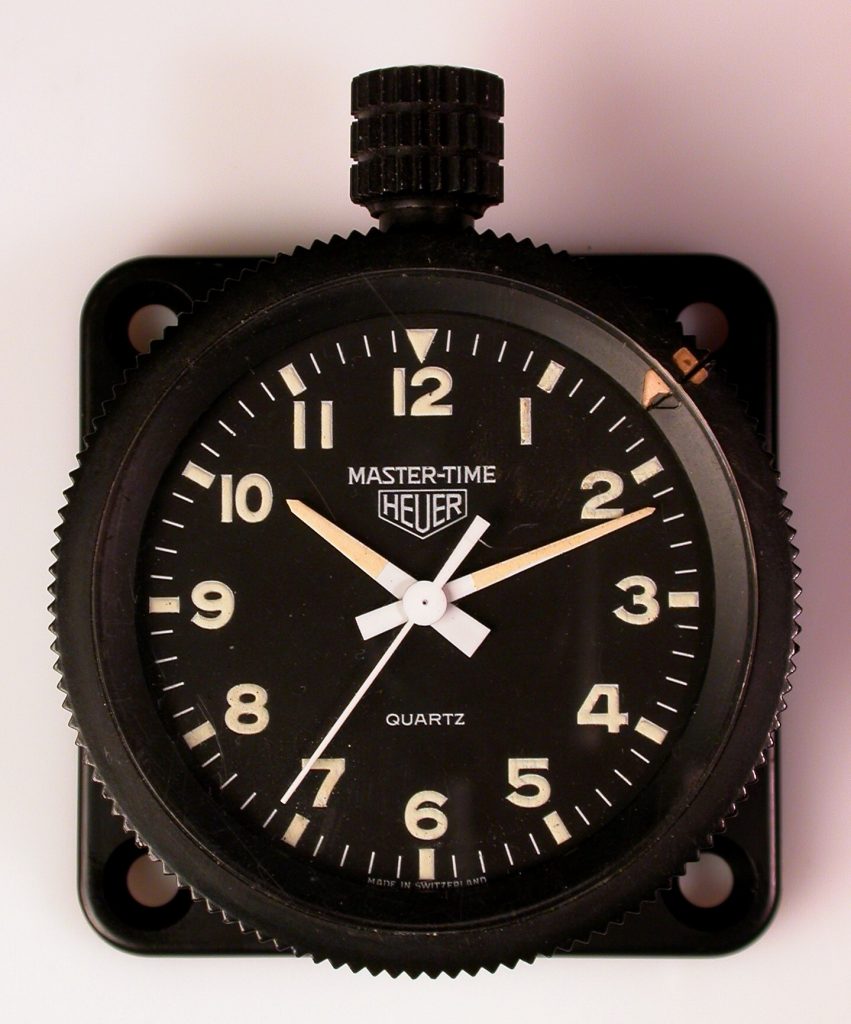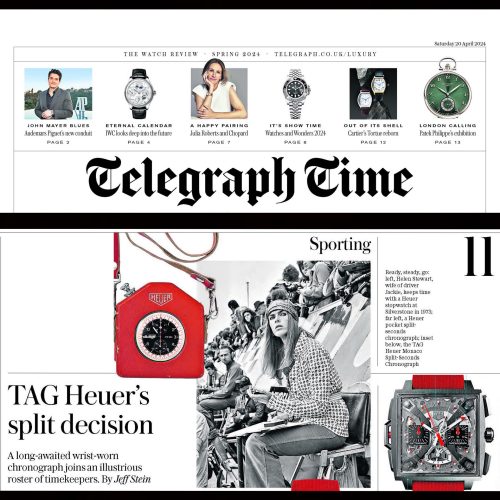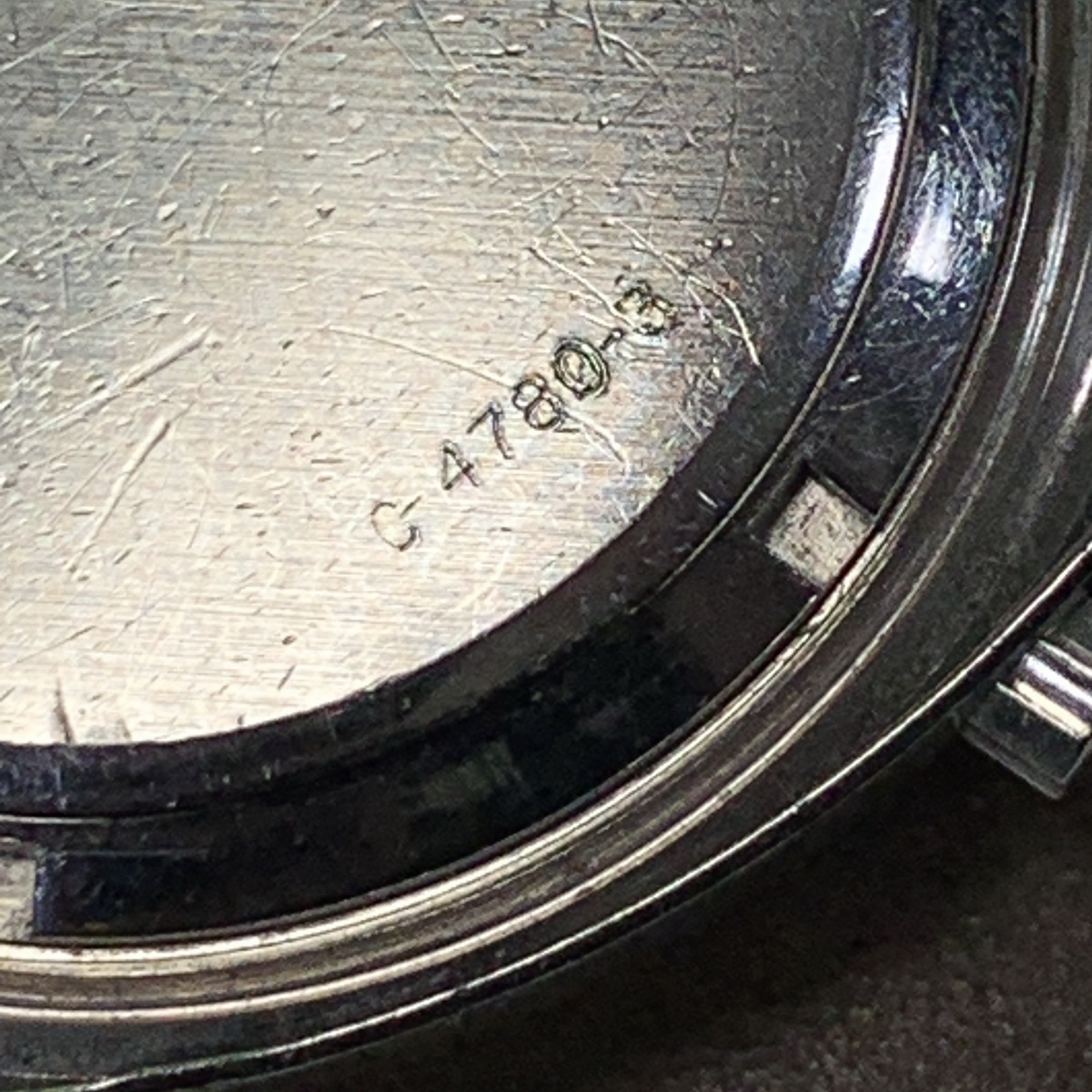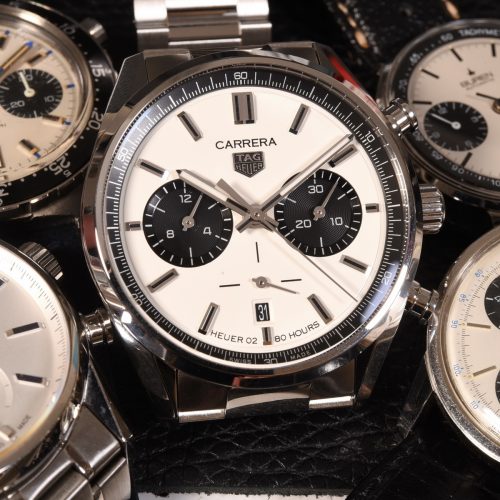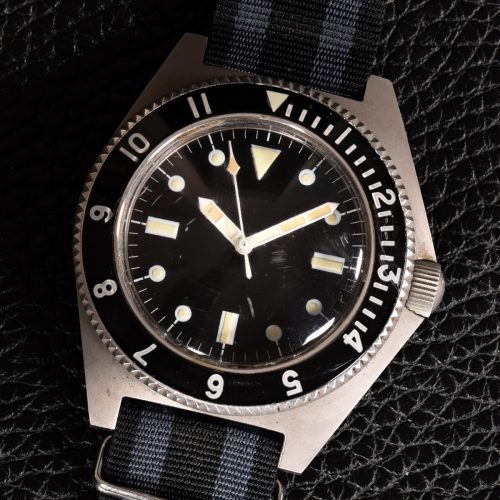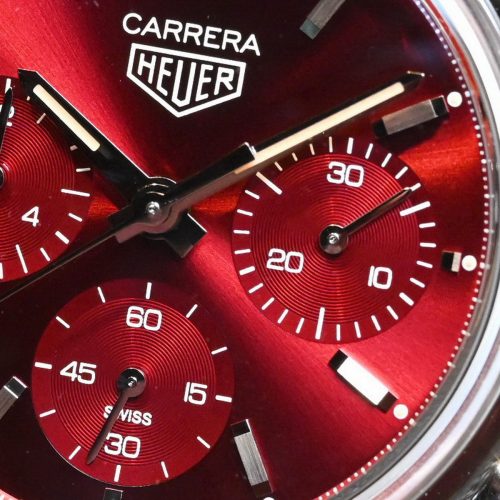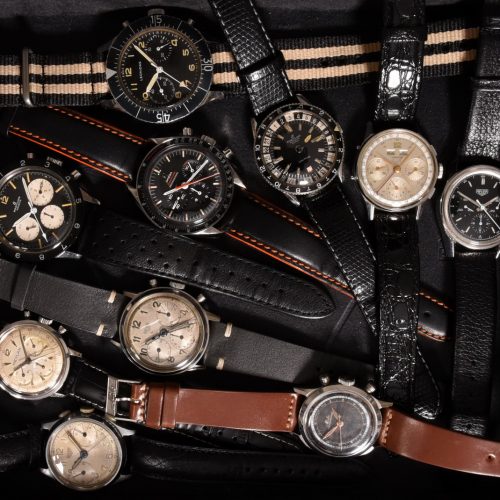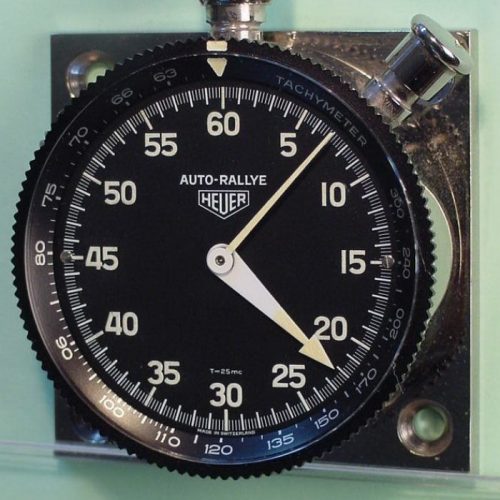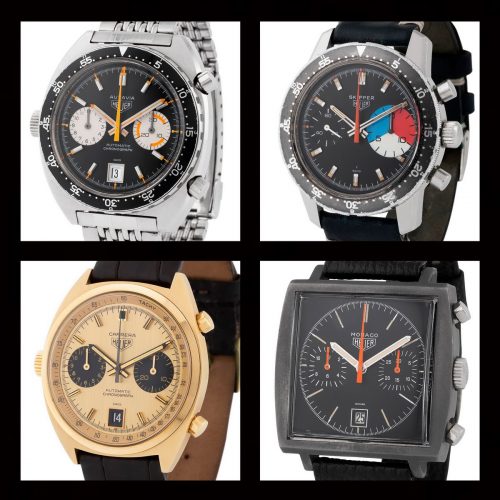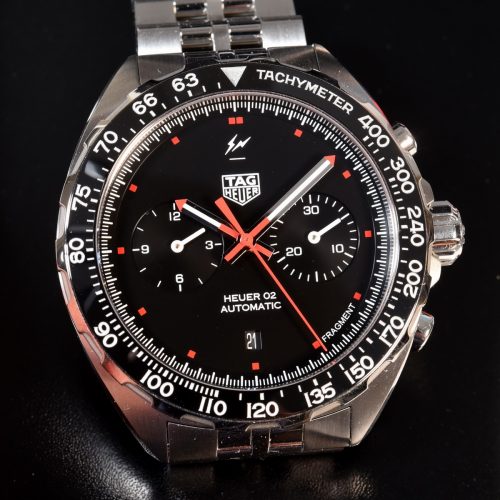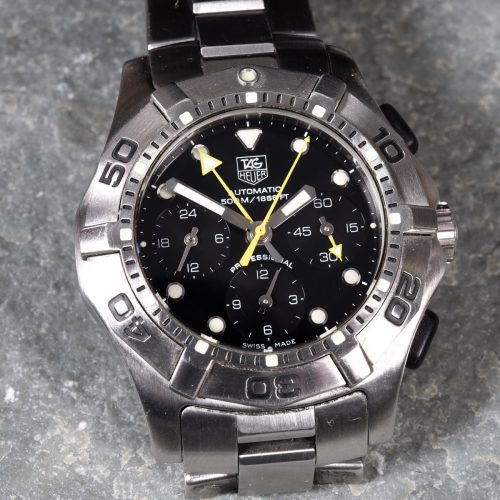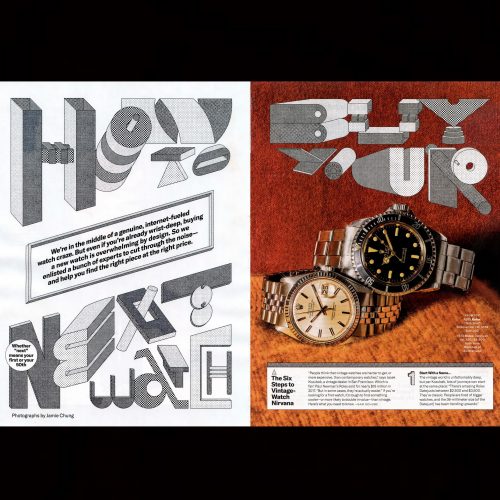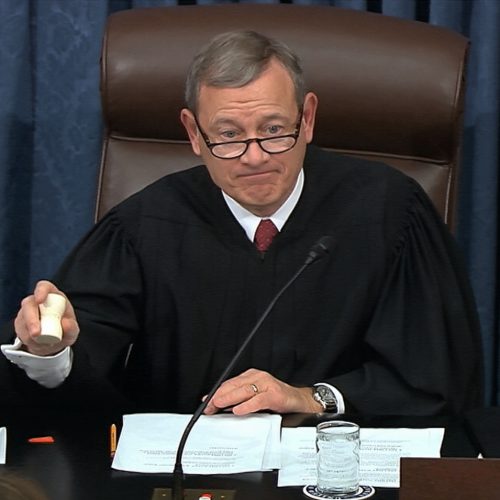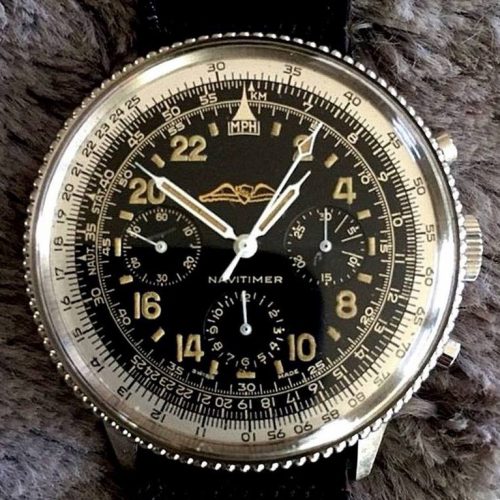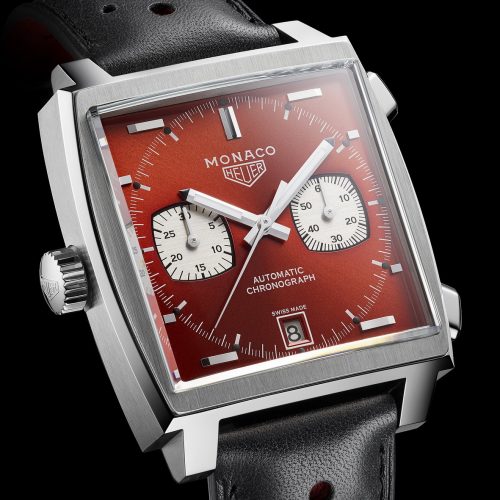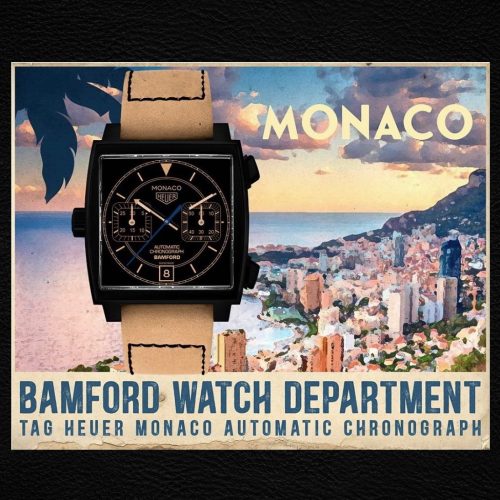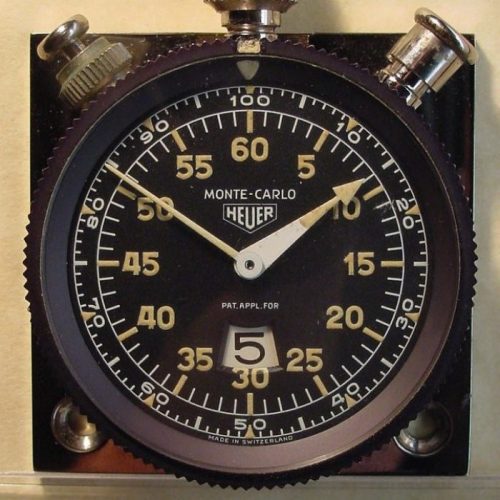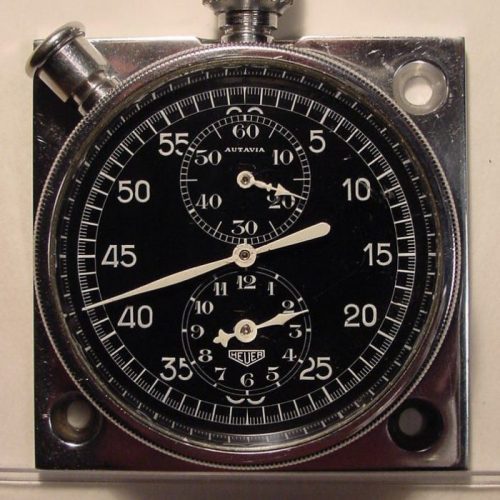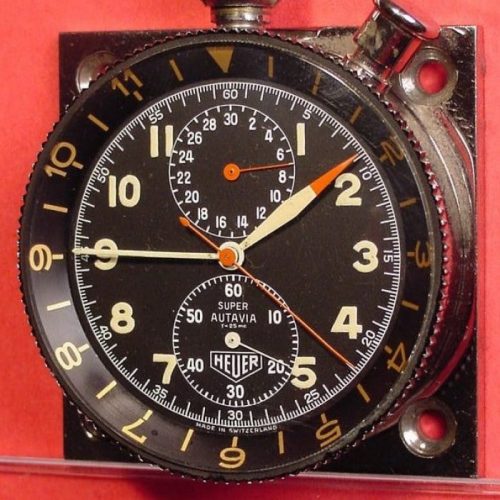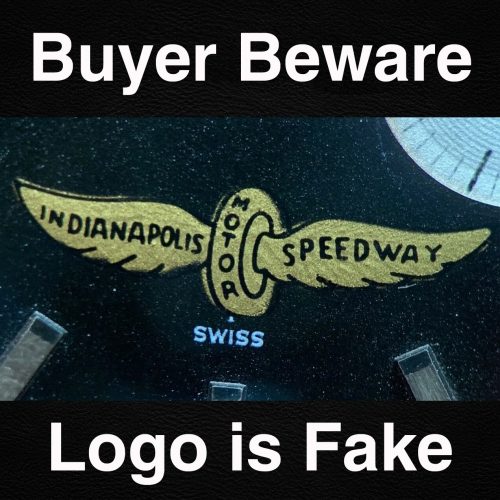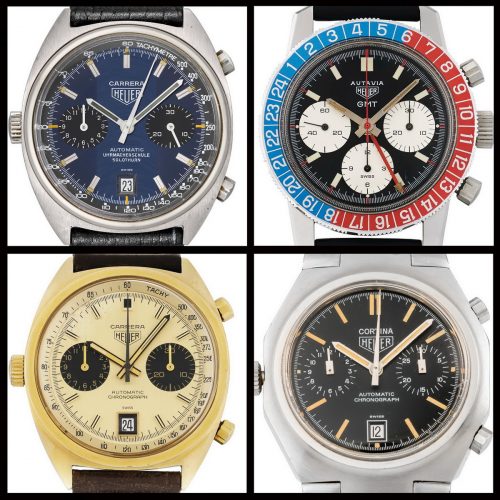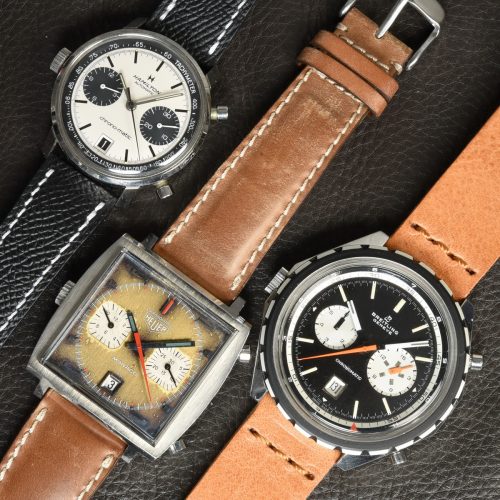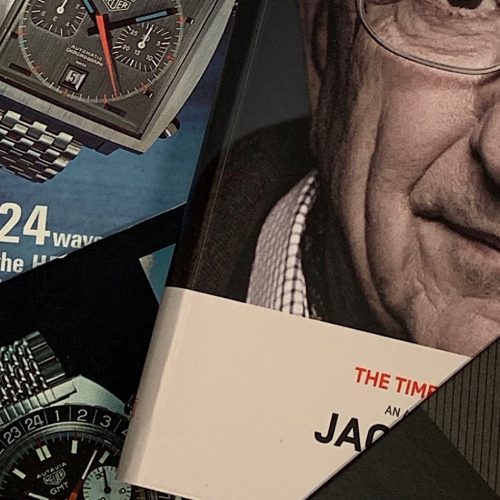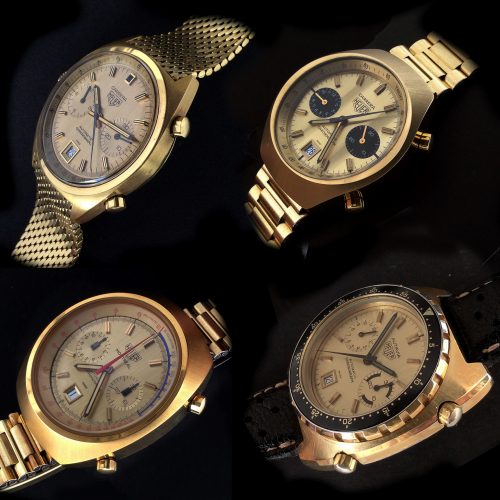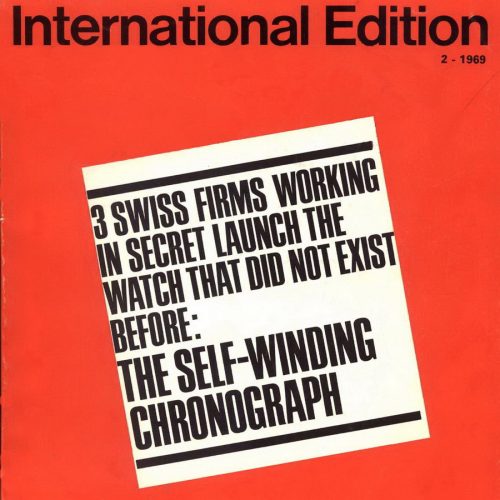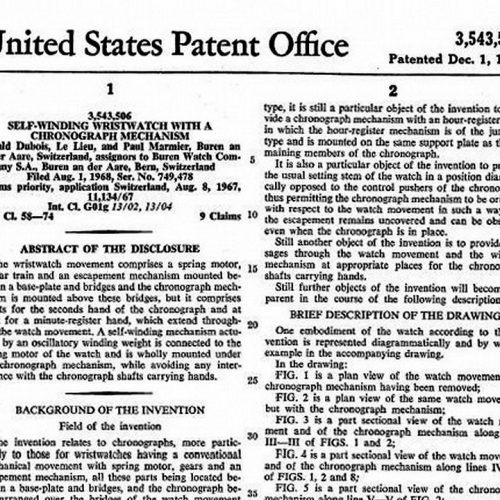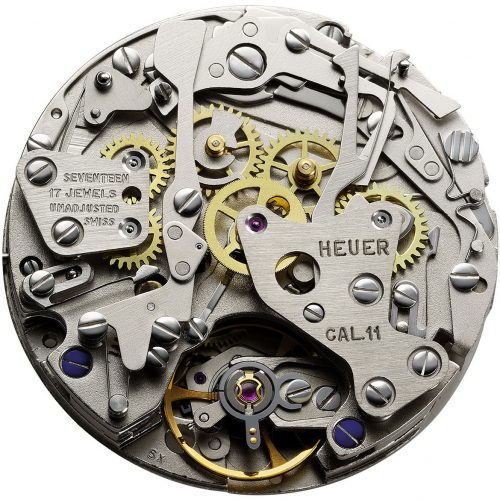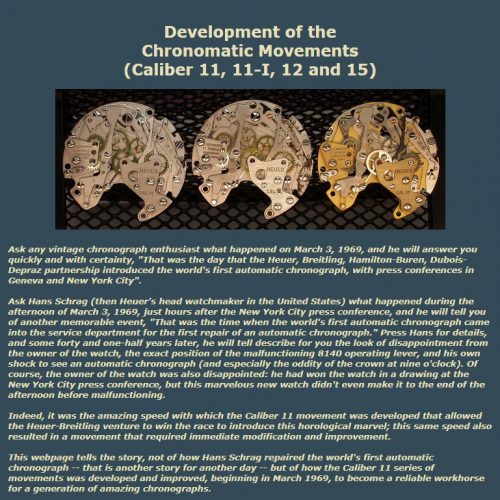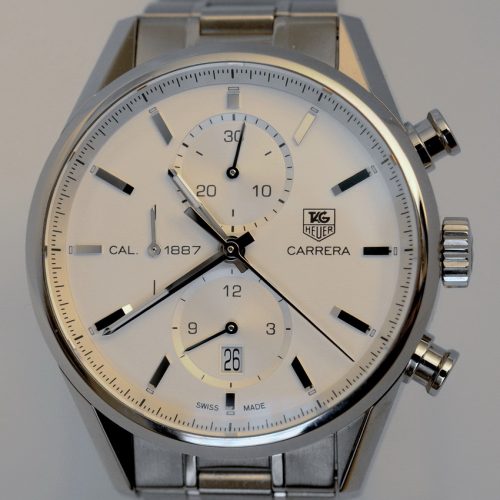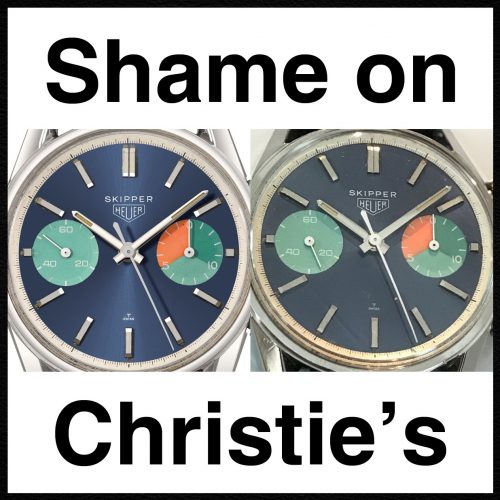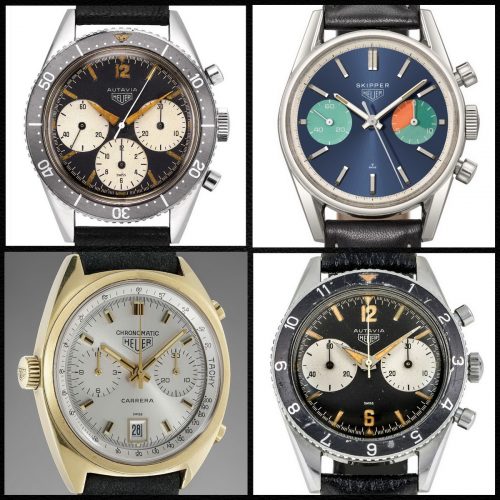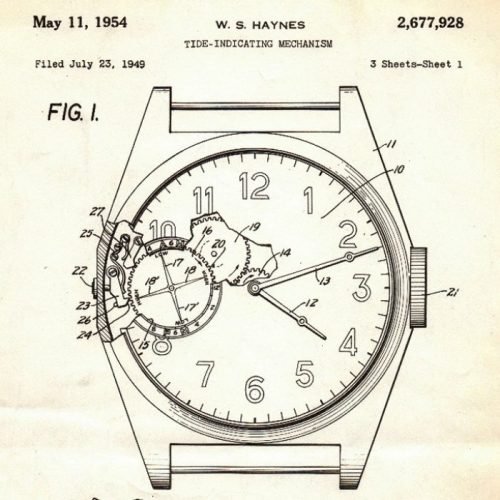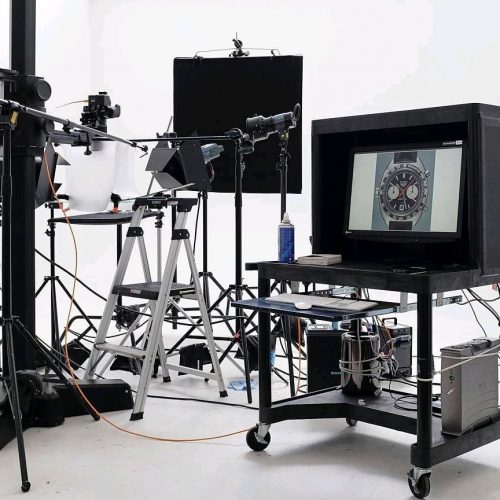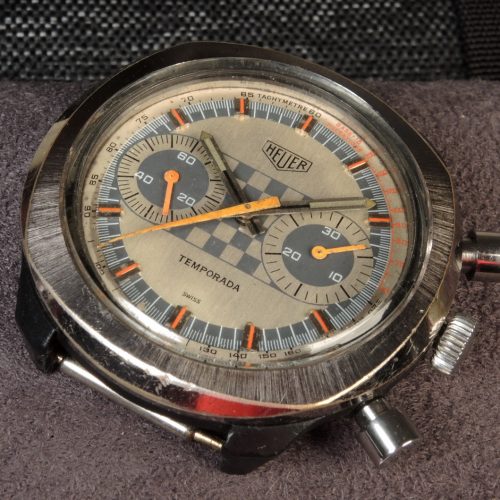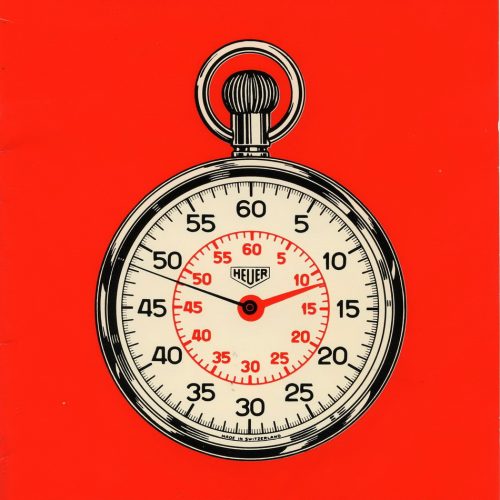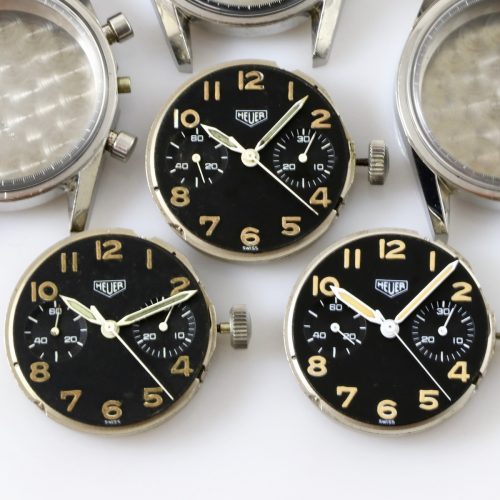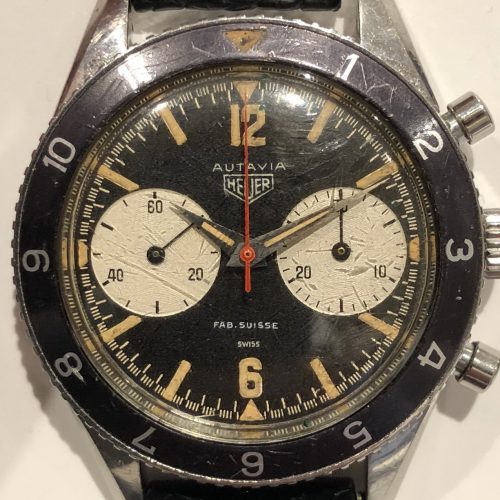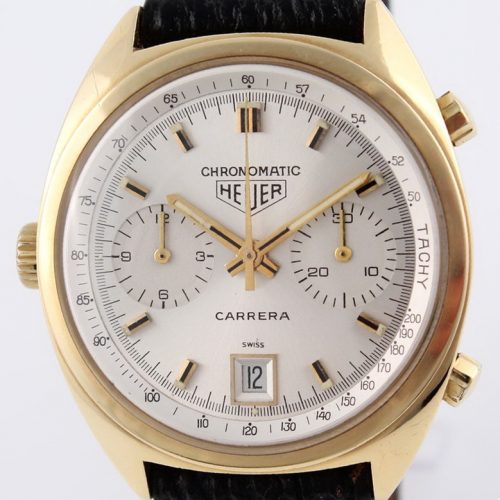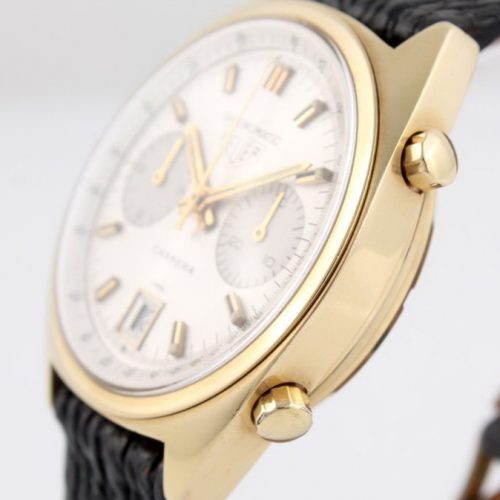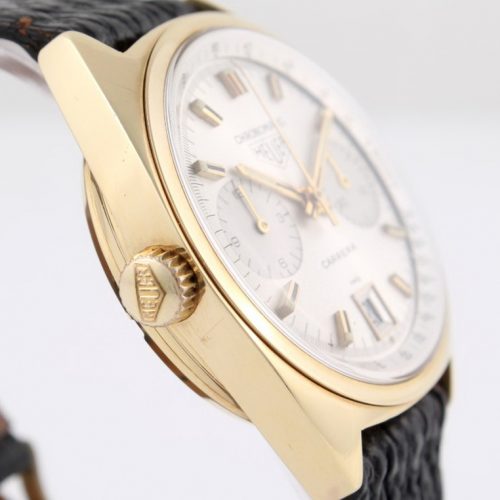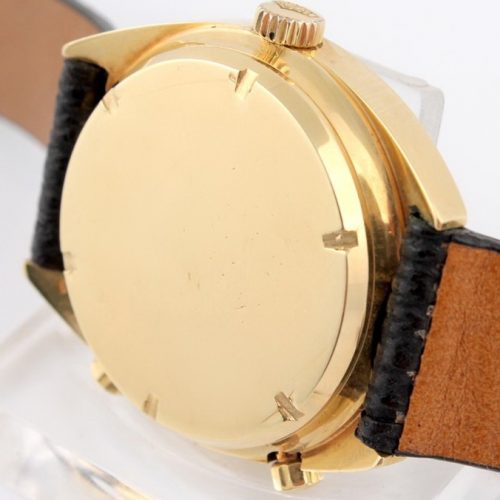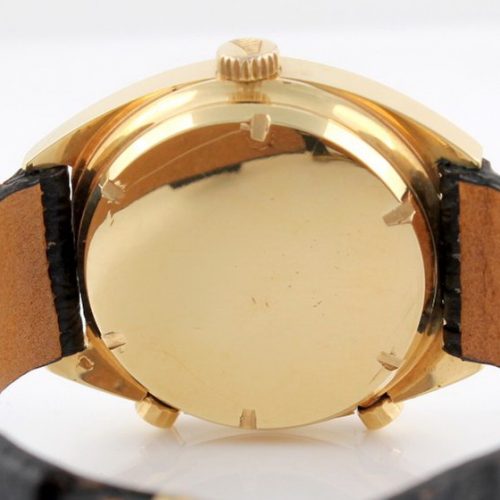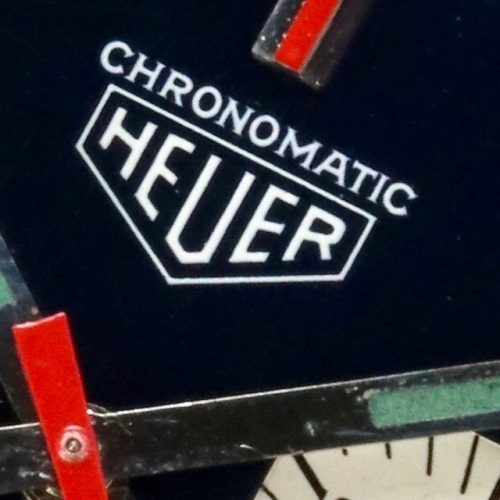The Master Time 8-day clock had the longest run of any of the dash-mounted Heuers, tracing its history back to the Hervues of the 1930s. Heuer first used the “Master Time” name in 1958 and the clock continued in production until 1985, making the transition from metal cases to plastic and from mechanical movements to quartz.
For rally timing, the early Hervue clocks were paired with Autavia stopwatches on a double back-plate.
Later, the Master Time 8-day clock was paired with a Monte Carlo 12-hour stopwatch to create the Rally-Master pair. The Rally-Maaster pair became almost standard equipment for many rally teams of the 1960s.
See the OnTheDash section covering the Master Time HERE.
History of the Master Time
A summary history of the Master Time is as follows:
1933 — Hervue. Hervue 8-day clock (also marketed under the name “Hervue Junior”) introduced as companion to the Autavia (dashboard stopwatch with 12-hour capacity). The Hervue 8-day clock is powered by Revue Thommen GT movement (two-barrel); numerals 1 through 12 on dial; second hand at bottom of dial (6:00 o’clock).
Hervue and Heuer. The next version of the Hervue 8-day clock adds the Heuer shield to the dial, below the Hervue name; second hand remains at bottom of dial (6:00 o’clock)
Heuer 8-Days Clock. The next version of the dial has the Heuer logo above the words “8 days”; second hand remains at bottom of dial (6:00 o’clock)
1958 — The First Master Time (Double Barrel Movement). In 1958, Heuer introduced the “Master Time” 8-day clock, as part of its redesigned series of dashboard timers (with the Monte Carlo and Auto-Rallye). The “Master Time” name appears above Heuer logo at top of dial; “8 Days” at bottom of dial; dial has numerals 3-6-9-12; powered by Revue Thommen 63 movement; double-barrel; center seconds (thick second hand); hack feature.
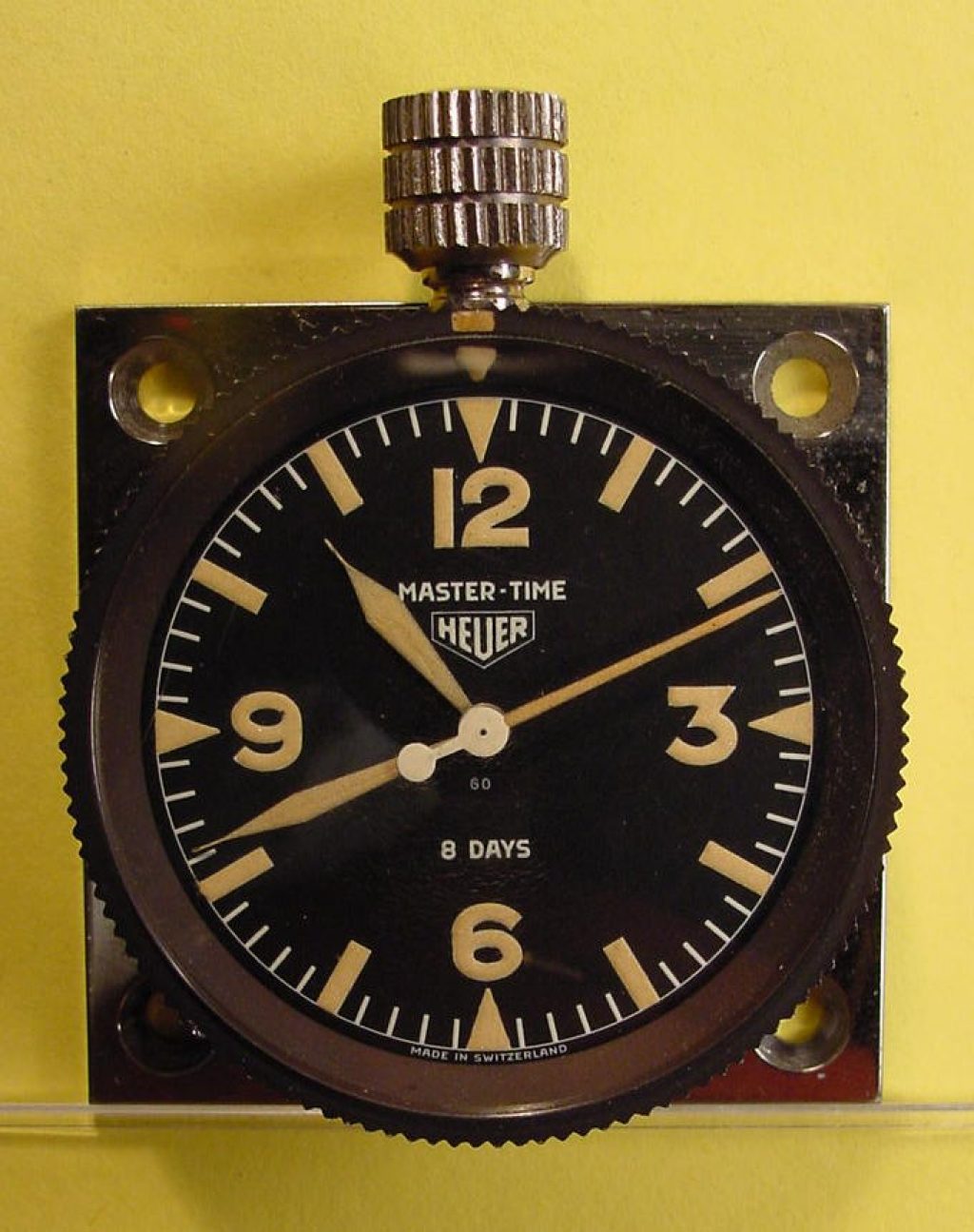
Early 1960s — Single Barrel Movement. In the early 1960s, the Arogno 28 movement (single barrel) replaced the Revue Thommen 63 movement (double barrel). On the updated clock, the center seconds hand is thinner; hack feature
1968 — 12 Numerals on Dial. The dial of the Master Time now has has numerals 1 through 12, rather than the previous 3-6-9-12. The case of the Master Time becomes thicker to match the profile of the new two-button version of the Monte Carlo.
1968 — GMT / 24-hour Master Time. In 1968, Heuer introduced a version of the Master Time with true 24-hour indication (i. e., the hour hand makes one revolution in 24 hours).
1975/76 — Plastic Case. The Master Time moves to a plastic case, which is attached to the back-plate with a bayonet mount. The Master Time continues to use Arogno 28 mechanical movement.
1981 — Quartz Movement. In the final version of the Master Time, the mechanical movement is replaced by a quartz movement. The Master Time continues to be housed in its plastic case.
1985 — Master Time discontinued. After being produced for over 50 years, Heuer discontinues production of the Master Time 8-day clock.
Additional Information.
See the OnTheDash section covering the Master Time HERE.
